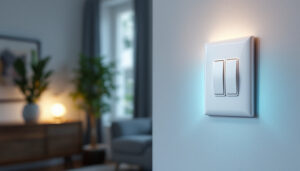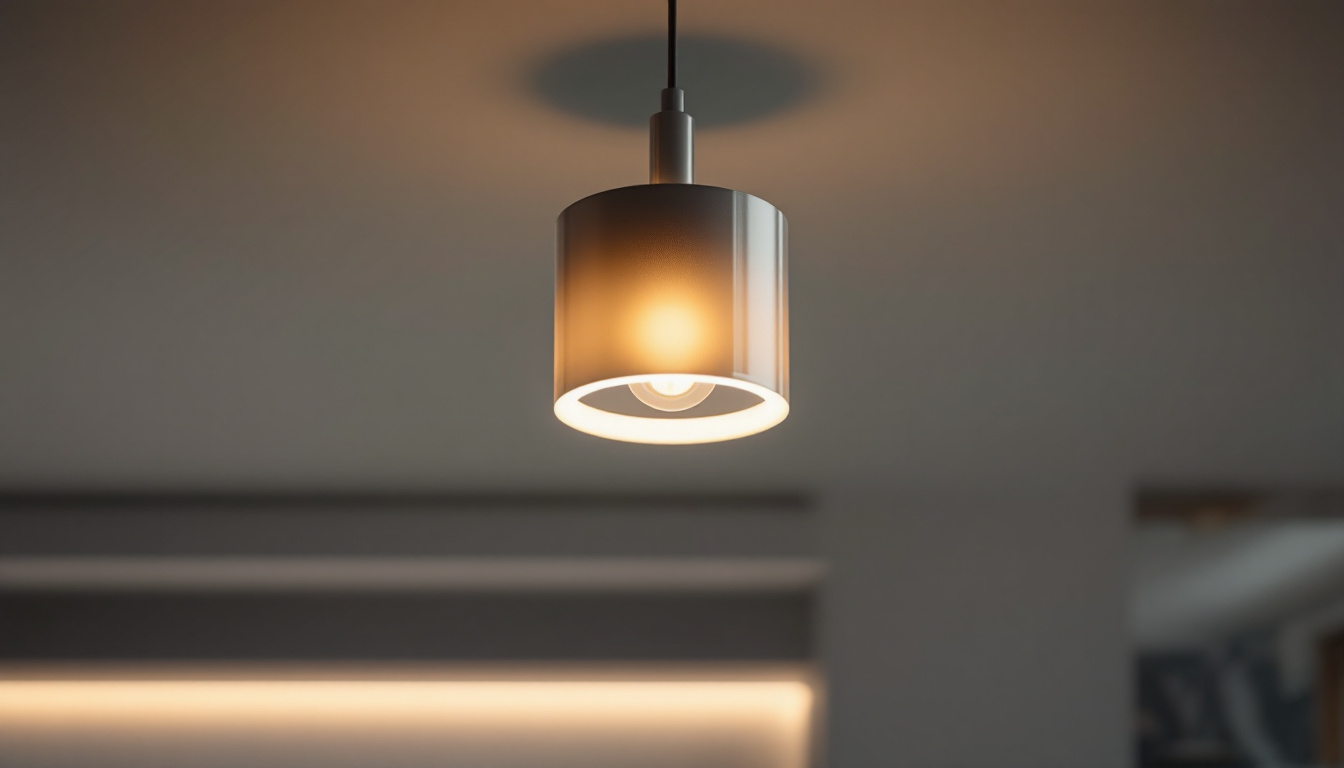

In the evolving landscape of interior design and architecture, chandeliers have transcended their traditional role as mere decorative fixtures. Today, they are pivotal elements in modern lighting solutions, combining functionality with artistic expression. For lighting contractors, understanding the multifaceted role of chandeliers can enhance project outcomes and client satisfaction.
Chandeliers have a rich history, originating from simple wooden frames adorned with candles to the intricate crystal designs seen in grand ballrooms. This evolution reflects broader changes in design philosophy, technology, and consumer preferences. As styles have shifted, so too have the materials and technologies used in chandelier construction. The earliest chandeliers, often crafted from wood, were utilitarian in nature, serving the dual purpose of providing light and showcasing the wealth of the homeowner. Over time, as glassmaking techniques advanced, chandeliers began to incorporate glass elements, leading to the stunning crystal chandeliers that became synonymous with opulence in the 18th and 19th centuries.
The transition from candles to electric bulbs marked a significant turning point for chandeliers. Initially, the introduction of electric lighting allowed for more elaborate designs and greater illumination. Today, LED technology has further revolutionized chandeliers, offering energy efficiency and longevity while providing a wide spectrum of color temperatures. This shift not only enhances the aesthetic appeal of chandeliers but also aligns with modern sustainability goals, as LED lights consume significantly less energy compared to traditional incandescent bulbs.
Lighting contractors must stay informed about these advancements. Modern chandeliers often incorporate smart technology, allowing for customizable lighting experiences that can be controlled remotely. This adaptability is increasingly appealing to clients seeking modern solutions. Features like dimming capabilities, color-changing options, and integration with home automation systems are becoming standard, enabling homeowners to create the perfect ambiance for any occasion, from intimate dinners to lively celebrations.
Contemporary chandelier designs reflect a blend of minimalism and bold artistic expression. Geometric shapes, mixed materials, and innovative finishes are prevalent in today’s market. For lighting contractors, understanding these trends can inform recommendations to clients looking to enhance their spaces. The use of unexpected materials, such as metals combined with natural elements like wood or stone, showcases a departure from traditional designs and invites a fresh perspective on lighting.
Moreover, the rise of open floor plans has led to a demand for larger, statement-making chandeliers that can serve as focal points in expansive areas. This trend emphasizes the importance of scale and proportion in chandelier selection. Designers are increasingly opting for oversized fixtures that draw the eye upward, creating a sense of grandeur and drama. Additionally, the incorporation of customizable elements, such as interchangeable shades or modular components, allows for personal expression and adaptability, ensuring that each chandelier can be tailored to fit the unique character of a space. As homeowners seek to make bold design choices, the chandelier remains an essential element in defining the atmosphere and style of their interiors.
While chandeliers are often viewed as decorative elements, their functional role in lighting cannot be overlooked. A well-placed chandelier can illuminate a room effectively while adding character and elegance. Beyond their visual appeal, chandeliers can serve as focal points that draw the eye, making them ideal for entryways and dining rooms where first impressions matter. The interplay of light and shadow created by a chandelier can transform the ambiance of a space, enhancing its overall design and making it feel more inviting.
Effective lighting design relies on layering different types of light, and chandeliers can play a crucial role in this strategy. They can provide ambient lighting, which sets the overall mood of a space, while also allowing for task lighting when strategically placed over dining tables or kitchen islands. By incorporating dimmable features, chandeliers can adapt to various occasions, from intimate dinners to lively gatherings, ensuring that the lighting complements the activity at hand.
Lighting contractors should consider the specific needs of each space when recommending chandelier styles. For instance, a dining area may benefit from a chandelier that offers both brightness and warmth, creating an inviting atmosphere for gatherings. Additionally, the choice of materials and design can further enhance the functionality of the chandelier; for example, glass or crystal options can refract light beautifully, adding depth and dimension to the room. Furthermore, the height at which a chandelier is hung can significantly impact its effectiveness, as it should be low enough to provide adequate light but high enough to avoid obstructing views or movement.
As sustainability becomes a priority in design, energy-efficient lighting solutions are increasingly sought after. Chandeliers equipped with LED bulbs not only reduce energy consumption but also lower maintenance costs due to their longevity. This shift towards energy efficiency is not just a trend; it reflects a growing awareness of the environmental impact of our choices, making it essential for homeowners and designers alike to consider sustainable options.
Contractors can educate clients on the benefits of energy-efficient chandeliers, highlighting the long-term savings and environmental impact. This knowledge can enhance the contractor’s value proposition, positioning them as informed professionals in a competitive market. Additionally, many modern chandeliers come with smart technology features, allowing users to control brightness and color temperature through mobile apps or voice commands. This integration of technology not only adds convenience but also aligns with the increasing demand for smart home solutions, making energy-efficient chandeliers a forward-thinking choice for any space. By staying informed about the latest innovations in lighting, contractors can better serve their clients and help them make choices that reflect both style and sustainability.
While chandeliers offer aesthetic and functional benefits, their installation and maintenance can pose challenges. Proper installation is critical to ensure safety and optimal performance.
When installing a chandelier, several factors must be considered, including height, weight, and electrical requirements. The chandelier’s height should allow for adequate clearance, especially in areas with high foot traffic. Additionally, the weight of the fixture may necessitate specialized mounting hardware to ensure stability.
Contractors should also be aware of local building codes and regulations regarding electrical installations. Compliance not only ensures safety but also protects the contractor from potential liability issues.
Chandeliers, particularly those made of crystal or intricate materials, require regular maintenance to preserve their beauty and functionality. Dust accumulation can dull the finish and affect light output, making routine cleaning essential.
Educating clients on proper care can enhance their satisfaction and prolong the lifespan of the chandelier. Providing maintenance tips, such as using a soft cloth and avoiding harsh chemicals, can empower clients to take an active role in caring for their lighting fixtures.
Chandeliers are not limited to residential applications; they also play a significant role in commercial spaces. From hotels to restaurants, these fixtures can elevate the ambiance and create memorable experiences for patrons.
In the hospitality industry, chandeliers can set the tone for an establishment. A luxurious chandelier in a hotel lobby can convey elegance and sophistication, while a more contemporary design in a trendy restaurant can enhance the overall vibe.
Lighting contractors working in commercial settings must consider the brand identity of the business when recommending chandelier styles. Understanding the target audience and desired atmosphere can guide the selection process, ensuring that the lighting complements the overall design vision.
In retail spaces, chandeliers can serve both aesthetic and functional purposes. They can draw attention to specific areas, highlight merchandise, and create an inviting shopping environment. The right chandelier can enhance product visibility while contributing to the overall branding of the store.
Contractors should collaborate closely with retail clients to understand their goals and how lighting can support them. This partnership can lead to innovative solutions that enhance the shopping experience and drive sales.
The integration of smart technology into chandeliers represents a significant advancement in lighting solutions. Smart chandeliers can be controlled via mobile apps or voice commands, allowing users to adjust brightness, color, and even create lighting schedules.
For lighting contractors, promoting smart chandeliers can add value to their services. These fixtures offer convenience and flexibility, appealing to tech-savvy clients who prioritize modern solutions. Additionally, smart chandeliers can integrate with home automation systems, providing a seamless experience for users.
Educating clients about the benefits of smart chandeliers can position contractors as forward-thinking professionals. Highlighting features such as energy monitoring and remote access can resonate with clients looking for innovative ways to enhance their living spaces.
While smart chandeliers offer numerous advantages, their installation can be more complex than traditional fixtures. Contractors must be familiar with the technology and ensure compatibility with existing systems. This knowledge is crucial to avoid potential issues during installation.
Providing clients with clear guidance on the installation process can enhance their confidence in choosing smart chandeliers. Offering support and troubleshooting services can further solidify the contractor-client relationship.
Chandeliers have evolved from mere decorative elements to integral components of modern lighting solutions. Their ability to blend aesthetics with functionality makes them a valuable asset in both residential and commercial spaces. For lighting contractors, understanding the diverse roles of chandeliers—from energy efficiency to smart technology—can enhance their service offerings and client satisfaction.
As the demand for innovative lighting solutions continues to grow, staying informed about trends, installation best practices, and maintenance tips will position contractors as industry leaders. Embracing the multifaceted nature of chandeliers can lead to successful projects and lasting client relationships.
Ready to elevate your lighting projects with the perfect chandelier? At LumenWholesale, we offer an extensive selection of spec-grade lighting products that blend aesthetic appeal with cutting-edge functionality. Our commitment to quality and affordability ensures that you can provide your clients with the best value in lighting solutions. Say goodbye to inflated markups and hello to hassle-free bulk buying with free shipping. Don’t compromise on quality or price. Visit LumenWholesale today and discover how we can help you shine in your next project with Wholesale Lighting at the Best Value.

Discover how lighting contractors are transforming warehouses with cutting-edge installations.

Discover innovative strategies to ensure your outdoor lighting projects stand the test of time.

Discover essential insights into cylinder lights with our comprehensive guide tailored for lighting contractors.

Explore essential insights for lighting contractors on dusk to dawn lights, including installation tips, energy efficiency benefits, and the latest technological advancements to enhance outdoor illumination projects..
Get notified when NEW deals are released.
Optimize your budget with wholesale discounts.
Only top-quality, specification-grade lighting products.
No additional costs at checkout - what you see is what you pay.
We understand the unique needs of contractors.